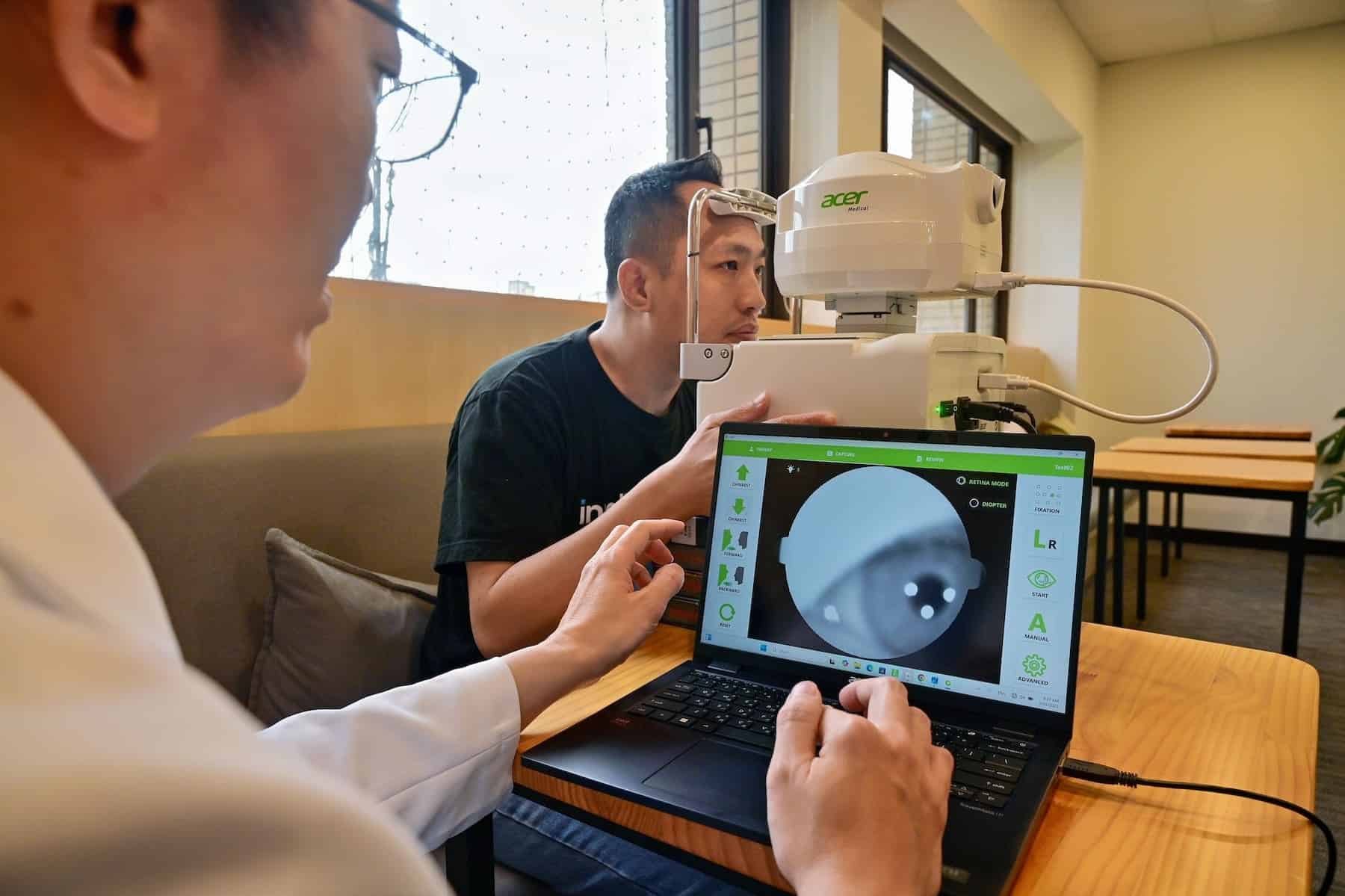Taiwan leads a new era in medical detection with AI solutions that work offline and accelerate diagnostics in rural areas
A comprehensive eye examination can take hours or even weeks if it requires validation from multiple specialists. But now, thanks to Acer Medical’s artificial intelligence and Intel technology, diagnosing conditions such as diabetic retinopathy or age-related macular degeneration can be done in just seconds, even in rural areas without internet connectivity.
The VeriSee DR and VeriSee AMD systems, developed by Dr. Hsieh Yi-Ting from the National Taiwan University Hospital in collaboration with Acer Medical, are already available in 13 countries and use Acer laptops equipped with Intel® Core™ Ultra processors. These tools allow for processing of retinal images without the need for pupil dilation and without network connectivity, preserving patient privacy.
A portable and precise revolution in ophthalmology
The operation is simple: a specialized camera captures a high-resolution image of the retina and transmits it directly to the laptop with built-in AI software. In seconds, the system automatically identifies and classifies potential eye lesions or complications, achieving an accuracy rate of 95% in the case of VeriSee AMD.
This not only reduces diagnosis time from weeks to seconds but also eliminates the need for eye drops and allows testing to take place outside of a hospital setting, such as in rural communities or senior residences. The entire system fits into a standard-sized suitcase, making it easy to transport.
A complement for doctors, not a replacement
Dr. Hsieh emphasizes that these tools are not meant to replace medical professionals but to complement them: “The information provided by AI is a useful reference, but it is always necessary for a specialist to evaluate the results and explain the next steps to the patient.” In addition, these solutions assist in training general practitioners and primary care physicians, facilitating the identification of eye lesions through automatic annotations.
AI for bone detection as well: osteoporosis through X-rays
In addition to eye diseases, Acer Medical offers VeriOsteo OP, a tool for osteoporosis detection that analyzes conventional chest X-rays to estimate bone mineral density (BMD). This software, approved by Taiwan’s Food and Drug Administration, allows for early detection of bone abnormalities without the need for specialized equipment.

Intel OpenVINO and the benefits of local inference
All these tools work thanks to the collaboration between Intel hardware (Core Ultra processors) and OpenVINO™ software, which allows models to run directly on the device. According to Dr. Allen Lien, CEO of Acer Medical, this optimization has reduced application startup time by 70%, image analysis time by 90%, and memory usage by another 90%.
This not only speeds up processes but also enables the scalability of the system in medical environments with limited resources.
International expansion and future plans
Acer Medical’s solutions are already operating in countries like Taiwan, Thailand, Malaysia, and Indonesia, and are expanding into more markets after successfully completing local clinical phases. At the National Taiwan University Hospital, they are already used in departments of Ophthalmology, Endocrinology, and Family Medicine, with plans for incorporation into geriatrics and elder care.
A reliable ally for transforming medicine
“I enjoy witnessing the progress of science, especially in artificial intelligence. It’s not just a flashy tool; it’s a valuable partner that can help us across all fields of society,” concludes Hsieh.
The case of Acer Medical demonstrates that ethically and efficiently applied AI has the potential to radically improve healthcare, especially in contexts where resources and access to specialists are limited. With faster, more accurate, and decentralized diagnostics, the future of medicine is already here.
Source: Intel

